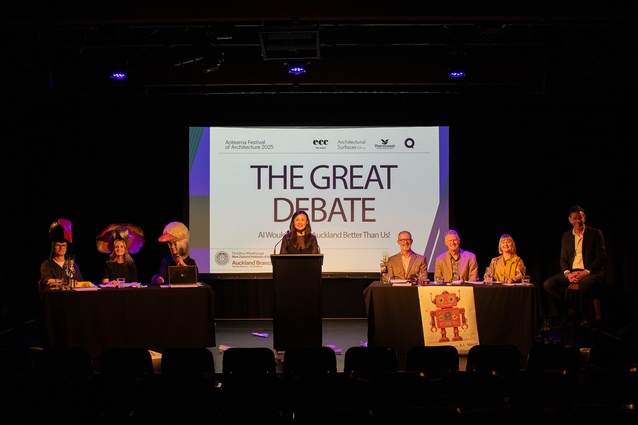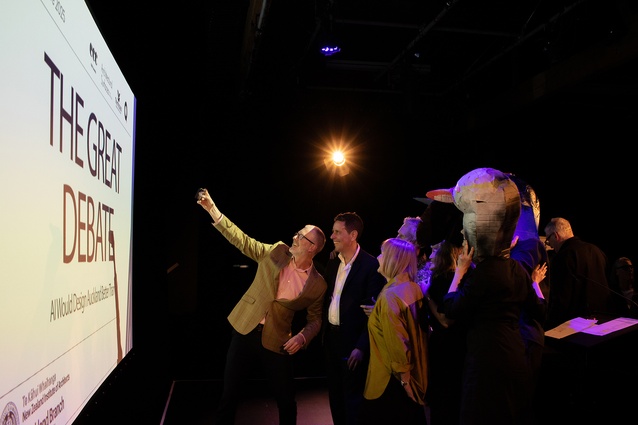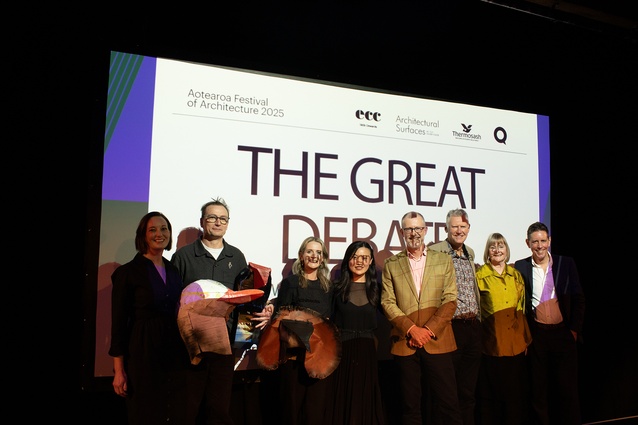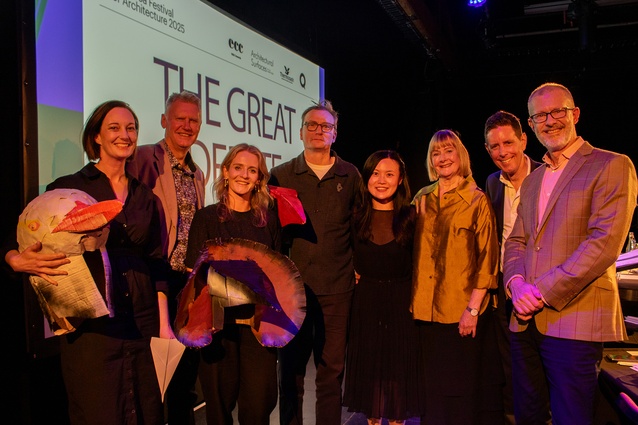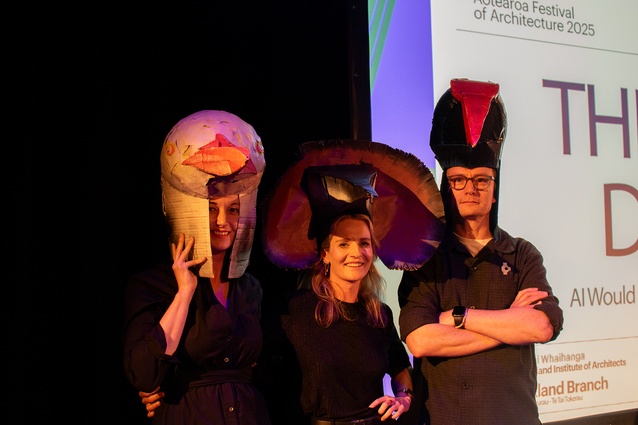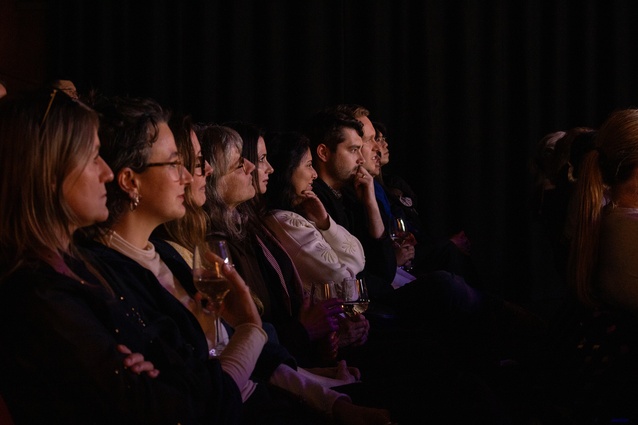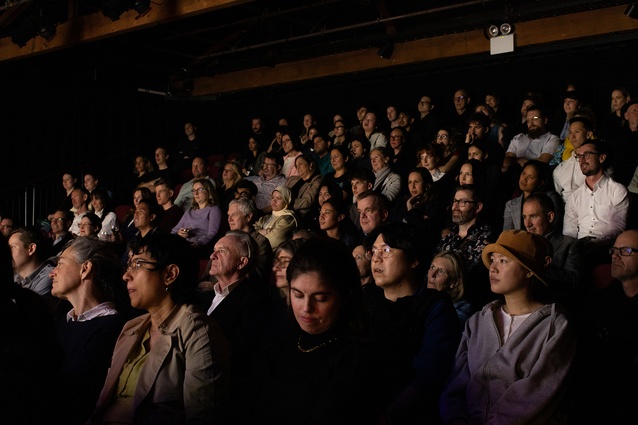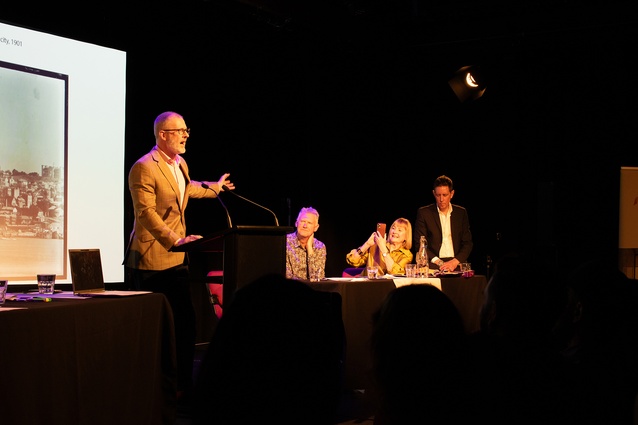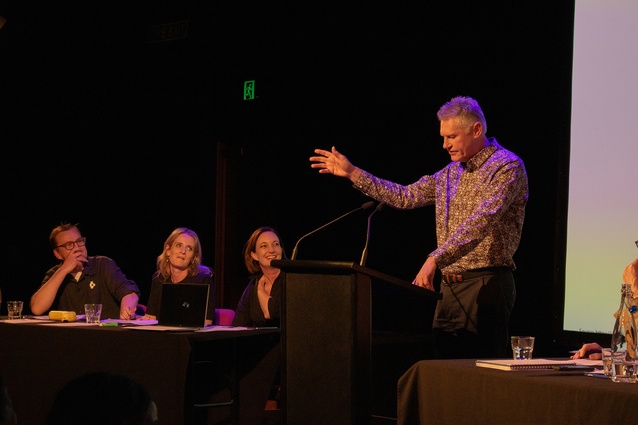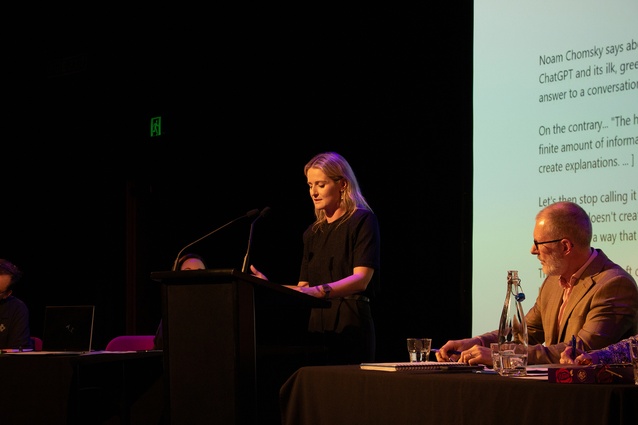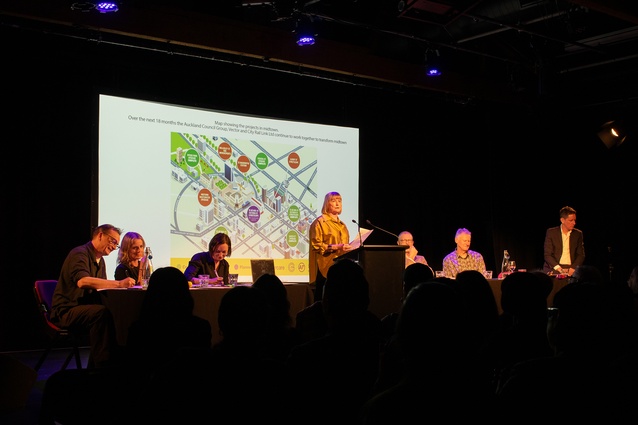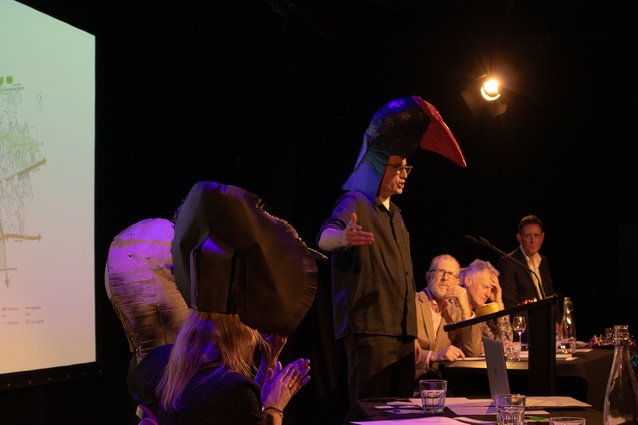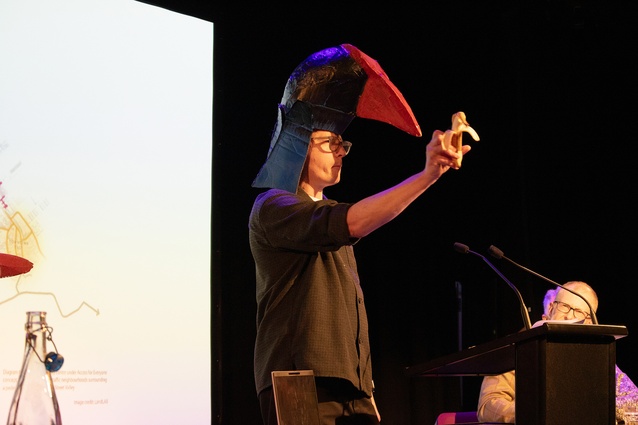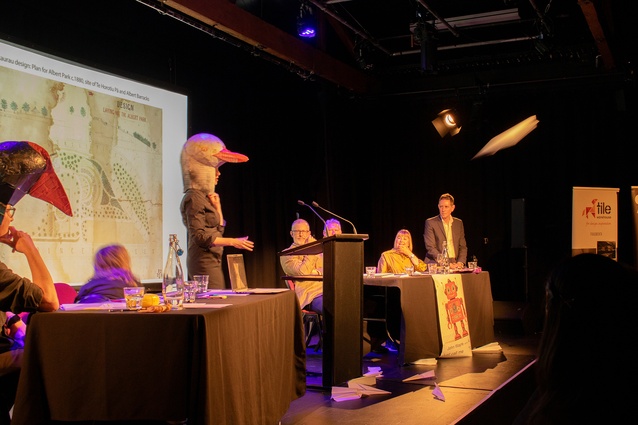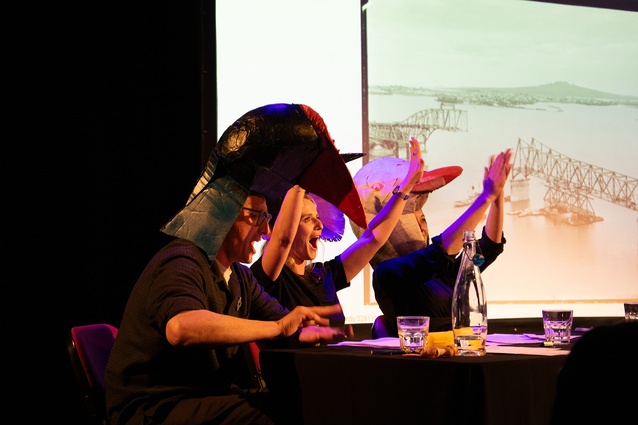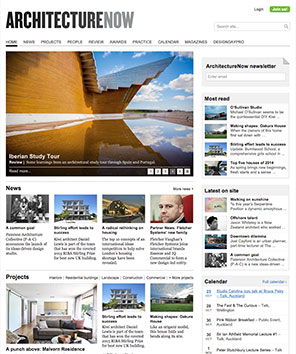Sahil Tiku: Journeys through the Aotearoa Festival of Architecture: Part 4
In the final part of the series, see the lectures, workshops and networking events attended by the award-winning writer, architectural graduate and past UoA representative for SANNZ, Sahil Tiku.
“Hey Arch-GPT, can you generate a re-designed Auckland for me? And make it more amazing than any person possibly could? And produce a render I can take to the client?”

Reader, I promised you in my last piece a review of the Great Debate (the peak of the 2025 Tāmaki iteration of the Aotearoa Festival of Architecture). Uncharacteristically, I have kept my word and was in (or rather, around) the audience on Friday 26 September as our panellists converged to debate the motion, convened and set by architect and Tāmaki Makaurau NZIA branch member Jenny Chen: “AI would design Auckland better than us?” At the crux of the debate? The challenge and opportunity for the profession to leverage AI as a collaborator for better design outcomes.
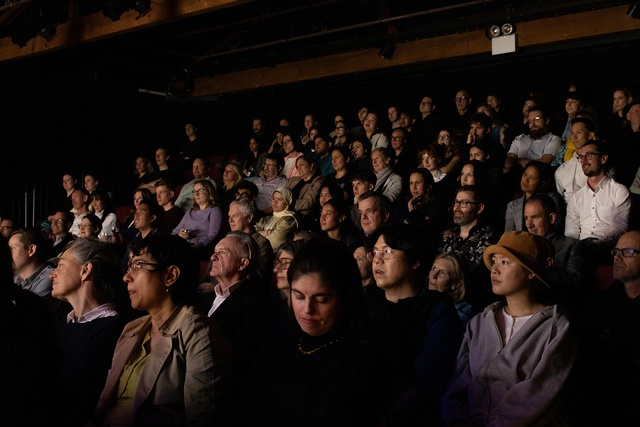
Six speakers were randomly assigned into teams of three on the opposing or affirming side, facing off one-on-one, conferring, and sending one member out for a summation of the team argument. The speakers traditionally represent a cross-section of the built-environment world: architecture, urbanism, engineering, and adjacent overlaps in publishing and commentating. The incorruptible Wallace Chapman (of RNZ fame) presided.
It’s a topical question, given the panicked picketing surrounding PC120, the harbour crossing hullaballoo, the ailing Auckland Light Rail aspirations, the discussion around de-porting the port, floundering flood recovery and the ever-present saga of sewage in our seas. Tāmaki Makaurau has spent decades mired in infrastructural, architectural and planning issues (and despite it all, remains an absolutely gorgeous place to live), and so the motion proves its relevance: could AI do it better than us. I preface this recount with an emphatic declaration that I support the opposition — that is to say: no. But the inexorable march of progress raises questions about the potential impact of AI on the humanity, creativity, and spontaneity that underpins design
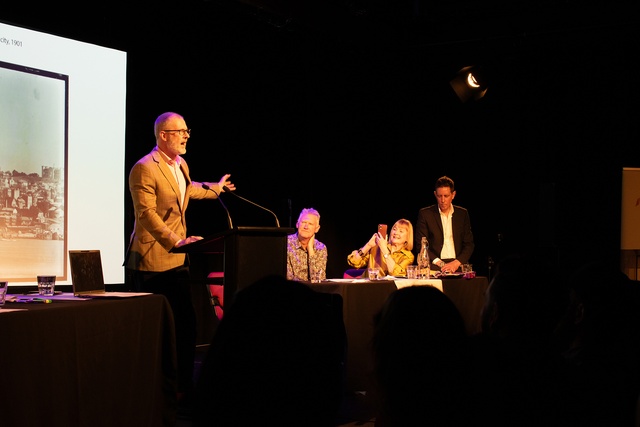
Former broadcaster and generally theatrical speaker Gordon Harcourt opened the debate with an impassioned speech for the affirmative side. According to Harcourt, Artificial Intelligence isn’t the Terminator, it’s more like… a labrador. In its unending desire to please us, AI will create an Auckland that astounds, our hedonist utopia. Immediately following his populist posturing, some surreptitiously bribe-shaped chocolates made their way from the opposing team’s table into Chapman’s hands (who — forever the fair moderator — handed them promptly out to the audience).
“He tangata, he tangata, he tangata.” What is the most important thing? It is people. This collectivist maxim formed the foundation of Nicole Stock’s opening salvo for the opposition. AI can’t do like people, and cities are for people. AI can’t negotiate the very human of citymaking. Stock’s former experience as an editor and publisher was apparent in the flair of her narrative: the cities we love; the Venices, Tokyos and Lisbons of the world, they are not characterised by the ruthless efficiency of the computational algorithm, but the layers upon layers of history, of happenings and mis-happenings, the sheer humanity of habitation (a “palimpsest,” to borrow Harcourt’s collective noun for a group of architects).


Of course, humans have been in stewardship of our urban environment since the first settlement of the isthmus. Since Auckland has become a teeming world city, what have we done with the place? It took us 70 years to gestate the City Rail Link, we dumped Robbie’s Rapid Rail in the ‘60s and ‘70s, we built the motorways that choke under the weight of our love affair with private automobiles every morning and evening. We built the harbour bridge in ’59, extended it in ’69 after the original scheme was shrunk (still without footpaths, bike lanes, or railway tracks!). According to ChatGPT, we then started discussing a second Waitematā Harbour Crossing in the ‘70s — and we’re still fighting over that today. This was the gist of Mike Quirk’s affirmative rebuttal — people have been designing this city for centuries and what do we have to show for it except infrastructural schemes undergoing brutal public vivisection by value engineering? Mike is diversifying from his engineering background and using his business skills to set up a new office in the city: Artificial Architects R Us is accepting CVs and promising a bold new future where things actually get built rather than just talked about!

Stephanie Miller is an engineer and project director at Holmes, and doubled down on the affirmative’s position (it’s all about people) — AI is trained on human-collected data, and AI will reflect that data’s inherent bias: exacerbating and creating economic, social, cultural and political divides and inequities (this position is investigated in recent research from the University of Auckland). Do we really need our cities designed by yes-men (Yes-devices? Yes-algorithms? Yes-GPT? The jargon is still nascent) who amplify our mistakes instead of calling them out? Humans can right our wrongs — AI will tell us we’re right. Miller presented a maxim from engineering school: “garbage in is garbage out” — and the implication was clear: that’s what we’d be faced with if Artificial Architects R Us start winning contracts.
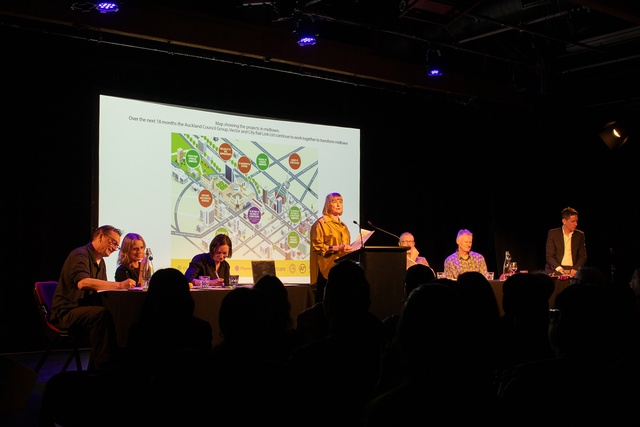
But are we not regularly faced with garbage? “Our skyline is monument to economics and ego, our suburbs consume fertile farmland like a malevolent biohazard, we’ve designed motorways as though cars are sacred and yet the traffic fails to flow.” Lindley Naismith (architect, NZIA fellow, industry legend) drove home Quirk’s position: we’ve done it for so long and screwed it up, perhaps the computer might do a better job? “We have let profit masquerade as planning,” she said to raucous applause. “AI is immune to egos: it doesn’t get the old boy’s network, it cannot be seduced by campaign donations.” Naismith enamoured us with visions of a fairer city, designed not by the public-private profiteer (possible not by a person at all), one where we all live in warm, dry, dense homes well-connected by reliable transport in a compact city filled with clean air, clear water and clean streets: “he tangata, he tangata, he tangata.” A city of fails turned back into a city of sails by the glorious algorithm — and I have to say that for an inkling of a moment, she nearly had me over to her side!
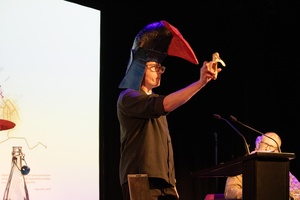
At some point in the debate, the opposition produced and donned three papier mâché bird heads: a Red-Billed Gull for Stock, an Australasian Crested Grebe for Miller, and a Takahe worn proudly by Jon Rennie (principal at Athfield Architects) who immediately cast a portentous air over Naismith’s paradise. The construction process is tedious enough, why would anyone want to add the horrors of a hallucination-prone handbrake? Rennie referenced the neologism “workslop:” a phenomenon where employees are using AI to create low effort output, that then requires more time and input to correct. We design by iteration, by reflection, we choose, we make choices that reflect our values. He demonstrated the creative potential of the human mind by turning a banana into a penguin and challenged AI to replicate the feat — “truth is stranger than fiction”. It is surprising how convincing someone can be whilst wearing the disembodied head of a native bird, demonstrating the aforementioned creativity, humanity and spontaneity that defines us.

My (clearly declared) biases aside, it seemed the audience agreed with me. The applause-volume verification method clearly demonstrated the room was aligned with the opposition — that people are in fact the future and will design the Auckland that tomorrow needs — a climate-friendly Auckland with diverse housing options, with safe and reliable and frequent public transport, welcoming urban realms, clean waterways, and with a thriving local economy. For what it’s worth, this writing is wholly human, created by a committed JAFA. The mutual agreement of the night was here — both teams imagined this glorious future for our shining city. AI may have a role to play (it seems to be reshaping the profession like the drawing board and CAD program before it), but we want the future to be human too.
The debate is an important event in making architecture publicly accessible, and a good litmus test for the general feeling of the discipline. I observed (through debaters’ speeches and the background slide show) a resilience, a readiness to adjust and adapt to disruptive tech like AI with new ways of working. It may have a place in pushing design, in helping us create good design outcomes with governmentally-encouraged efficiency [paywalled]. The 2025 motion highlighted some pressing issues facing the city — our built environment is shifting massive, and some long-overdue projects promise a brighter future and a more people-friendly city (despite a national reticence to build efficiently, we are building).
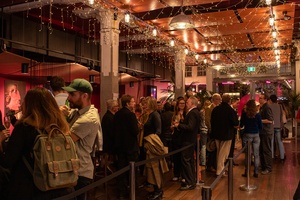
Te Kāhui Whaihanga New Zealand Institute of Architects presented a fantastic program for the Aotearoa Festival of Architecture this year. Tāmaki’s schedule was peppered with variety: workshops, lectures, debate, site visits, and some good old-fashioned glass-clinking, shoulder-rubbing networking opportunities. The debate bookended the proceedings (as this article bookends our quadruple-articled journey) with some light-hearted but topical (and appropriately intellectual) back-and-forth. I have given you the slimmest picking in this 4-part series — to those of you wanting to hear more, I can only suggest you make sure to get your tickets and your dance card filled out faster when the Festival returns in 2026, and thank you for accompanying me on this ride.
Letter to the Editor
Dear Editor,
I have just finished reading Sahil Tiku’s review on ArchitectureNow of the NZIA Great Debate.
While overall the article was excellent, it is highly concerning that Mr Tiku does not know his Takahes from his Pukekos and that your readers were led to believe that I was wearing a Takahe hat!
I think we can all agree what a libellous slight this is!
No one in their right mind would be seen wearing a Takahe hat?!!
I demand a correction!
A video message apology on ArchitecureNow from yourself, Mr Tiku and the publisher Mr. Inkpen wearing NZ Native bird headdresses is the bare minimum I will settle for.
I look forward to your prompt response, else you will be hearing from my lawyers.
Your sincerely
Jon Rennie
Dear Mr Rennie,
It is with the sincerest shame that I apologise for my incorrect identification. I extend my sincerest apologies, and can assure you that in lieu of a headdress-adorned video, the Takahē and Pūkeko will receive my 2nd and 3rd preference votes in the 2026 Bird of the Year election. Please call off your lawyers or I will be forced to turn to ChatGPT for some legalslop advice.
Mauri ora,
Sahil Tiku

